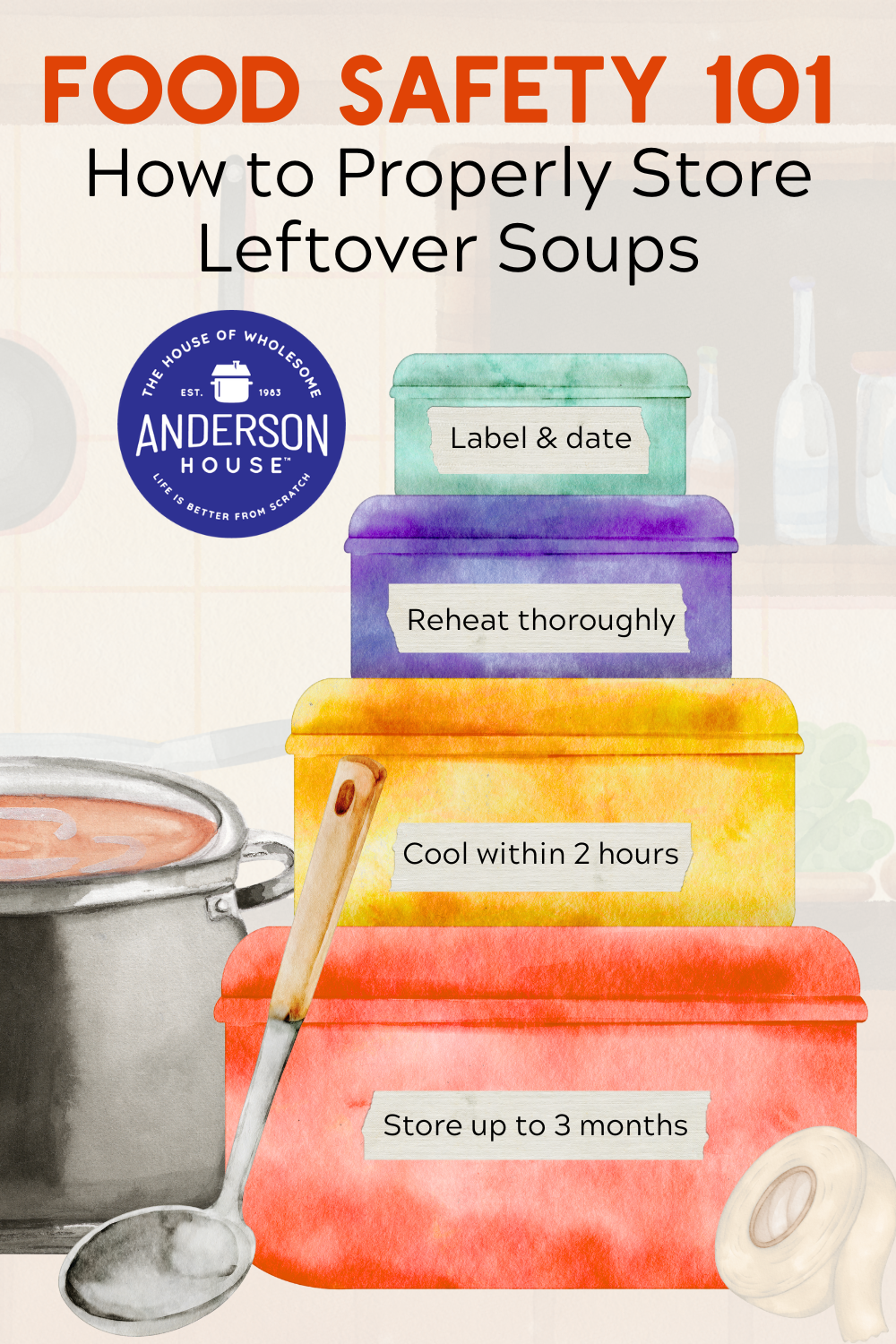Food Safety 101: How to Properly Store Leftover Soups
Posted by Eunice Juanzo on May 17th 2023
Life gets busy, and sometimes a bowl of leftover soup is the easiest—and tastiest—way to keep dinner stress-free. Whether you’ve just finished a big batch of Broccoli Cheddar or a simmering pot of Chicken Noodle, storing leftover soup safely is essential for both your health and your tastebuds.
Leftovers help reduce food waste, save time, and stretch your grocery budget—but only if they’re stored properly. So let’s walk through the basics of how to store soup in the fridge or freezer, how to spot spoiled soup, and why following food safety guidelines matters.
Why Soup Storage Safety Matters
According to the USDA Food Safety and Inspection Service, one of the biggest risks when storing leftovers is the “danger zone”—that’s the temperature range between 40°F and 140°F, where bacteria can grow rapidly.
To avoid this, soups (and all leftovers) should be packed and refrigerated within two hours of cooking or after being removed from a slow cooker, stove, or warming appliance. The faster you cool and store your soup, the safer—and tastier—it will be.
How to Store Cream-Based Soups
Soups with dairy—like our Creamy Cauliflower, Loaded Potato, or Tomato Basil—can be trickier to store.
Here are our go-to tips for safe storage:
-
Cool it down: Let the soup cool to room temperature before placing it in the refrigerator. This prevents condensation, which can water down your soup and compromise flavor.
-
Keep it short-term: Store creamy soups in the fridge for no more than 3 days. These don’t freeze well due to the dairy content, which can separate and become grainy when reheated.
-
Want to freeze it? Split it.
If you're making a large batch, freeze a portion before adding any milk or cream. Add the cream later, during reheating, for the best texture. -
Label and date everything. Use masking tape or freezer labels to track what’s in each container and when it was made. It’s a small step that makes a big difference.
How to Store Broth-Based or Dairy-Free Soups
Soups that don’t contain cream—such as Tortilla Soup, White Bean Chili, Vegetable Soup, or Chicken Stew—are much more freezer-friendly and can be kept longer in the fridge.
Here’s how to store them like a pro:
-
Cool before storing: As with creamy soups, let the pot cool slightly before storing. Placing hot soup in the fridge can raise the temperature inside the appliance, putting other foods at risk.
-
Use airtight containers: BPA-free plastic containers, glass jars (leave room for expansion if freezing), or quart-size freezer bags all work well. Make sure the containers seal tightly to prevent freezer burn and odor absorption.
-
Fridge or freezer?
-
Store in the fridge for up to 4 days.
-
Freeze for up to 3 months for best quality.
-
-
Portion it out: Freezing individual servings makes for quick lunches or dinners later—just grab, thaw, and heat.
How to Tell If Leftover Soup Has Gone Bad
Even with the best intentions, sometimes life gets in the way and leftovers sit longer than planned. Here’s how to check if your soup is still safe to eat:
-
Smell test: If the soup has a sour, funky, or “off” odor, it’s likely spoiled.
-
Visual cues: Any visible mold, discoloration, or unusual texture (like sliminess) means it’s time to toss.
-
Taste (only if it passes the first tests): If it smells fine and looks okay, taste a small spoonful. A sour or strange taste means it’s no longer safe.
-
When in doubt, throw it out: Trust your senses. Foodborne illness isn’t worth the risk.
Final Thoughts
Whether you're storing leftovers from a big batch of soup made at home or saving half of a Frontier Soups mix for another day, knowing how to store soup properly helps you enjoy every last spoonful—safely.
Soup is one of the most comforting, convenient meals out there. Let’s keep it safe, fresh, and flavorful from the first simmer to the final reheat.


